Common weeds that impact management decisions
Effective weed management requires an integrated approach. Weed stage and weather impact the effectiveness of herbicides. Herbicide resistance is becoming more prevalent requiring more intensive weed management strategies. This document will outline some of the most prevalent weeds impacting management decisions for farmers in Ontario and Quebec.
- Canada fleabane
- Common ragweed
- Foxtails: giant, green and yellow
- Giant ragweed
- Lambsquarters
- Pigweed: green, redroot and smooth
- Velvetleaf
- Waterhemp
Common name: Canada fleabane
Scientific name: Conyza canadensis
Life Cycle: Annual/Winter annual
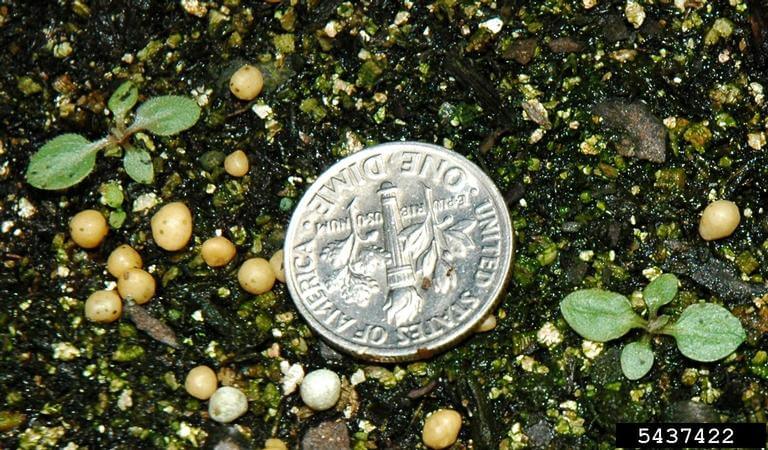 Figure 1. Canada Fleabane seedlings. Picture courtesy of Bruce Ackley, The Ohio State University, Bugwood.org.
Figure 1. Canada Fleabane seedlings. Picture courtesy of Bruce Ackley, The Ohio State University, Bugwood.org.
 Figure 2. Erect central stem of Canada Fleabane.
Figure 2. Erect central stem of Canada Fleabane.
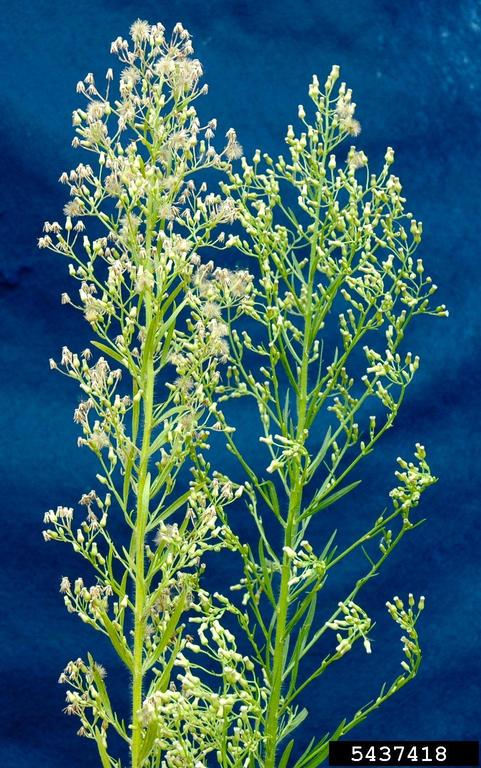 Figure 3. Canada Fleabane panicle flower head. Photo courtesy of Bruce Ackley, The Ohio State University, Bugwood.org.
Figure 3. Canada Fleabane panicle flower head. Photo courtesy of Bruce Ackley, The Ohio State University, Bugwood.org.
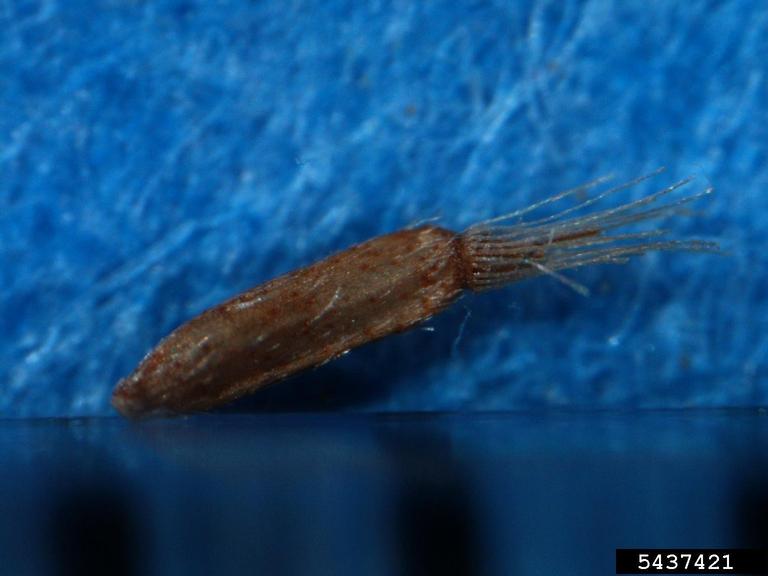 Figure 4. Canada Fleabane seed with pappus that aids in wind-dissemination. Photo courtesy of Bruce Ackley, The Ohio State University, Bugwood.org.
Figure 4. Canada Fleabane seed with pappus that aids in wind-dissemination. Photo courtesy of Bruce Ackley, The Ohio State University, Bugwood.org.
Identification: Canada fleabane emerges in both fall and spring. Seedlings develop into a basal rosette (Figure 1). Fall-emerged plants survive the winter as a basal rosette and bolt in the spring. Canada fleabane leaves are alternate, linear, and simple with entirely or slightly toothed margins (Figure 2). Leaves get progressively smaller toward the top of the plant. When plants are mature, leaves do not have petioles. The main stem bolts, giving the plant the appearance of a horse’s tail. Flowers are arranged in a panicle with numerous white ray flowers (Figure 3). Fruit are small, yellow achenes, each with a white pappus that aids in wind dispersion (Figure 4). Canada fleabane seeds usually germinate in the fall or spring but can germinate midsummer when growing conditions are adequate. Plants can reach up to 6 feet in height. Once plants are over 5 inches tall, they are difficult to control with herbicides alone.
Watchouts: Canada fleabane has increased in prevalence and herbicide-resistant biotypes have developed due to three primary factors: use of reduced or no-tillage, a lack of diversity in crop rotations (production of soybeans in the same field for consecutive years), and limited herbicide diversity. Multiple herbicide-resistant Canada fleabane (ALS inhibitor and glyphosate) is common in Ontario crops.1,2 Abundant seed production and wind dispersal facilitate the spread of herbicide-resistant Canada fleabane biotypes.
Management: Several factors can influence Canada fleabane control. The size and stage of growth at the time of herbicide application can have a significant effect on efficacy. Canada fleabane is most susceptible to control when it is small, in the rosette stage of growth, and less than 4 to 6 inches tall. Once Canada fleabane bolts it is more difficult to control. The second factor is the extended emergence time of Canada fleabane, which can complicate the timing of burndown applications. In many cases, including a herbicide with residual activity can help control later-emerging plants. A third challenging factor to Canada fleabane control is the limited number of postemergence herbicide options, particularly in soybean. Because of this limitation it is important to use burndown, preplant, and preemergence herbicides effectively.
There are herbicide options available for fall or spring burndown, preemergence, and postemergence applications for Canada fleabane control. Preemergence herbicides with residual activity should be the foundation of a Canada fleabane management program. Canada fleabane susceptibility to herbicides declines substantially once the plant bolts in the spring.
Canada fleabane management tips:
- Fall or early spring herbicide application for emerged plants to reduce large populations or seedlings. Plan for an additional herbicide application closer to planting.
- Spring burndown application to Canada fleabane less than 4 inches tall to prepare a clean seed bed.
- Add residual herbicides to the spring burndown application.
- Use full label rates of herbicides for maximum residual activity and postemergence activity on variable-height Canada fleabane.
- Herbicide applications with multiple sites of action should be used in areas with ALS, glyphosate, or multiple herbicide-resistant biotypes.3
- Use postemergence herbicides in-crop to control escaped plants.
- Rotate crops and use tillage to reduce heavy Canada fleabane infestations.3
- Consult product labels for use precautions and restrictions to prevent crop injury or carryover.
Sources:
1Ontario Ministry of Agriculture, Food and Rural Affairs. 2020. Ontario weeds: Canada fleabane in Ontario Weeds - Weed gallery. http://www.omafra.gov.on.ca/english/crops/facts/ontweeds/canada_fleabane.html.
2 Cowbrough, Mike. 2020. Resistant weed species by county. Field Crop News. https://fieldcropnews.com/2016/03/herbicide-resistant-weed-maps/.
3 Loux, M., Stachler, J., Johnson, B., Nice, G., Davis, V., and Norby, D. 2006. Biology and management of horseweed. GWC-9. https://www.extension.purdue.edu/.
Lingenfelter, O., Klodd, A., and Curran, N. 2017. Marestail (horseweed) management. Penn State Extension http://extension.psu.edu.
Sprague, C. 2018. Herbicide-resistant horseweed (marestail) in Michigan: keys to management in no-till soybean. Michigan State University Weed Science. http://www.msuweeds.com.
Web sources verified 2/25/21.
Common name: Common ragweed
Scientific name: Ambrosia artemisiifolia
Life Cycle: Summer Annual
 Figure 5. Young common ragweed plant.
Figure 5. Young common ragweed plant.
 Figure 7. Common ragweed seeds. Photo courtesy of Bruce Ackley, The Ohio State University, Bugwood.org.
Figure 7. Common ragweed seeds. Photo courtesy of Bruce Ackley, The Ohio State University, Bugwood.org.
Identification: Common ragweed is native to the U.S. and Canada and is a common weed in agricultural settings. It has a shallow, fibrous root system and grows from 2 to 4 feet high. The leaves are lacy, finely-divided, and usually slightly hairy (Figure 5). The seeds are achenes topped with several spikes and resemble a crown (Figures 6 and 7).
Watchouts: Synchronous early-season germination is characteristic of common ragweed in non-crop situations. Management practices that promote a uniform canopy can help suppress the growth of ragweed.
Management: Common ragweed populations in Ontario and Quebec have confirmed resistance to Group 2 (ALS inhibitors). In Ontario, there are also populations with resistance to Group 5 (triazines), and Group 9 (glyphosate) herbicides with some even having multiple resistance to Group 2 and 9 herbicides.1 Comprehensive weed management should include scouting to determine the appropriate preplant tillage or burndown herbicides for ragweed control. Control all ragweed seedlings prior to planting with tillage or preplant burndown herbicides. For optimal control, herbicides should be applied when ragweed are under 4 to 6 inches tall. Successful management programs must include both preemergence and postemergence applications with at least two effective herbicide sites of action.
Sources:
1 Heap, I. 2021. The International Survey of Herbicide Resistant Weeds. www.weedscience.org/.
Jordan, T., Nice, G., Smeda, R., Sprague, C., Loux, M., and Johnson, B. 2010. Biology and management of common ragweed. Glyphosate, Weeds, and Crops Series. GWC-14. Purdue University Extension.
Web sources verified 2/25/21.
Common name: Giant foxtail
Scientific name: Setaria faberi
Life Cycle: Annual
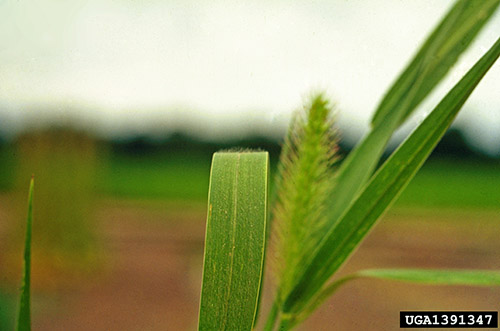 Figure 8. Giant foxtail upper leaf surface and seedhead. Photo courtesy of John D. Byrd, Mississippi State University, Bugwood.org
Figure 8. Giant foxtail upper leaf surface and seedhead. Photo courtesy of John D. Byrd, Mississippi State University, Bugwood.org
 Figure 9. Giant foxtail seeds emerge after common lambsquarters and ragweeds. The period of emergence is lengthy. Photo courtesy of Bruce Ackley, The Ohio State University, Bugwood.org
Figure 9. Giant foxtail seeds emerge after common lambsquarters and ragweeds. The period of emergence is lengthy. Photo courtesy of Bruce Ackley, The Ohio State University, Bugwood.org
Identification: Giant foxtail is a summer annual that is problematic in Eastern Canada. It has a round stem, hairy ligule, and distinctive fuzzy seed head with a nodding appearance (Figure 8). Yellow foxtail and green foxtail closely resemble giant foxtail in general characteristics– ligule, growth habit, habitat, and reproductive characteristics. Giant foxtail is the largest of the three species and its seedlings and mature plants have numerous short hairs on the upper surface of the blades and on the margin of the sheaths.
Giant foxtail begins germinating in the spring. The emergence period for giant foxtail is lengthy and its seeds can emerge from shallow soils (Figure 9).
Management: Foxtails have developed herbicide resistance in Ontario. Giant foxtail and green foxtail have developed resistance to Group 2 (ALS inhibitors). Yellow foxtail has developed resistance to Group 5 (triazines).1 Using cultural practices along with chemical control diversifies management and reduces the risk of developing herbicide resistance.
To manage giant foxtail, start with tillage or burndown herbicides. Apply postemergence herbicides early when plants are young (4 inches or less). Use multiple sites of action for both pre- and postemergence herbicide applications to help manage resistance development.
Similar species: Green foxtail (Setaria viridis) and yellow foxtail (Setaria pumila) have similar characteristics to giant foxtail. All are summer annuals and form the distinctive, fuzzy, foxtail seed head. Each grow upright and have a ligule that is a fringe of hairs. While it can be challenging to distinguish the foxtails, each species has unique characteristics that aid in identification.
Both green and yellow foxtail have narrower leaf blades compared to giant foxtail. Green foxtail has a smooth upper leaf surface (Figure 10), while yellow foxtail has a smooth upper leaf except for prominent, scattered, long hairs near the collar (Figure 11). Yellow foxtail has flat leaf sheaths with a reddish-purple tint at the base. Green and giant foxtail both have round leaf sheaths. The leaf sheath of green foxtail is lined with small hairs while that of giant foxtail is smooth.
One of the most distinguishing features is the color and size of the seed head. Green foxtail seed heads are green or purple tinted and do not droop in the arch shape like giant foxtail (Figure 12). Yellow foxtail seed heads turn yellowish brown at maturity and are more compact compared to green or giant foxtails (Figure 13).
 Figure 10. Green foxtail leaves are hairless, rough, and up to 12 inches long. Sheaths are usually hairless except for short hairs along the margins. Picture courtesy of Bruce Ackley, The Ohio State University, Bugwood.org.
Figure 10. Green foxtail leaves are hairless, rough, and up to 12 inches long. Sheaths are usually hairless except for short hairs along the margins. Picture courtesy of Bruce Ackley, The Ohio State University, Bugwood.org.
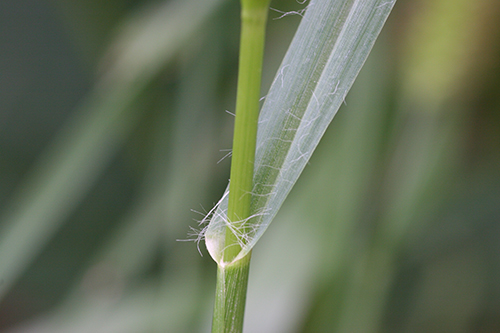 Figure 11. Yellow foxtail leaves are hairless except for long, wispy hairs on the upper leaf surface near the collar. Photo courtesy of Steven Gower.
Figure 11. Yellow foxtail leaves are hairless except for long, wispy hairs on the upper leaf surface near the collar. Photo courtesy of Steven Gower.
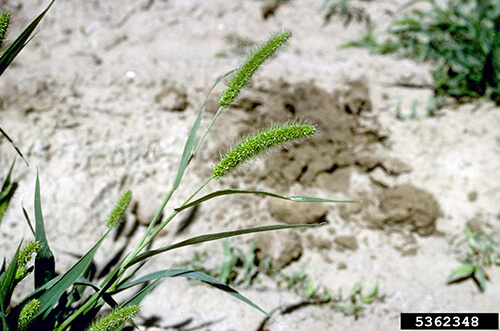 Figure 12. Green foxtail seedhead. Photo courtesy of Howard F. Schwartz, Colorado State University, Bugwood.org.
Figure 12. Green foxtail seedhead. Photo courtesy of Howard F. Schwartz, Colorado State University, Bugwood.org.
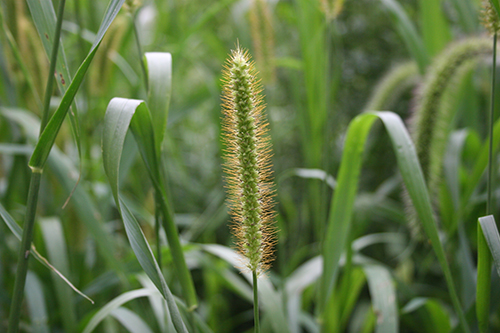 Figure 13. Yellow foxtail seedhead. Photo courtesy of Steven Gower.
Figure 13. Yellow foxtail seedhead. Photo courtesy of Steven Gower.
Sources
1Heap, I. 2021. The International Survey of Herbicide Resistant Weeds. www.weedscience.org.
Bradly, K. 2014. Weed of the month: the foxtails, similar yet different. Integrated Pest Management. University of Missouri. http://ipm.missouri.edu.
Johnson, B. 2019. Giant foxtail management in soybeans. Take Action Herbicide Resistance Management. http://iwilltakeaction.com.
Web sources verified 2/25/21.
Common name: Giant ragweed
Scientific name: Ambrosia trifida
Life Cycle: Summer annual
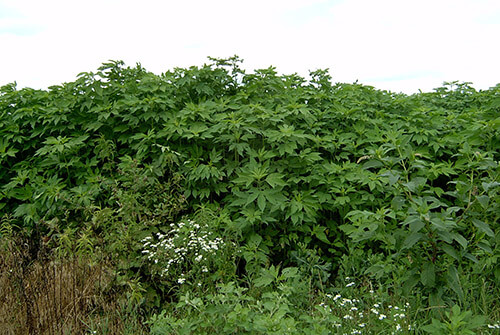 Figure 14. Giant ragweed can be up to 15 feet tall and can significantly reduce yield potential. Photo courtesy of Steven Gower.
Figure 14. Giant ragweed can be up to 15 feet tall and can significantly reduce yield potential. Photo courtesy of Steven Gower.
 Figure 15. Giant ragweed seedling. Photo courtesy of Steven Gower.
Figure 15. Giant ragweed seedling. Photo courtesy of Steven Gower.
 Figure 16. Young giant ragweed plant. Photo courtesy of Steven Gower.
Figure 16. Young giant ragweed plant. Photo courtesy of Steven Gower.
 Figure 17. Giant ragweed flowering branch. Photo courtesy of Steven Gower.
Figure 17. Giant ragweed flowering branch. Photo courtesy of Steven Gower.
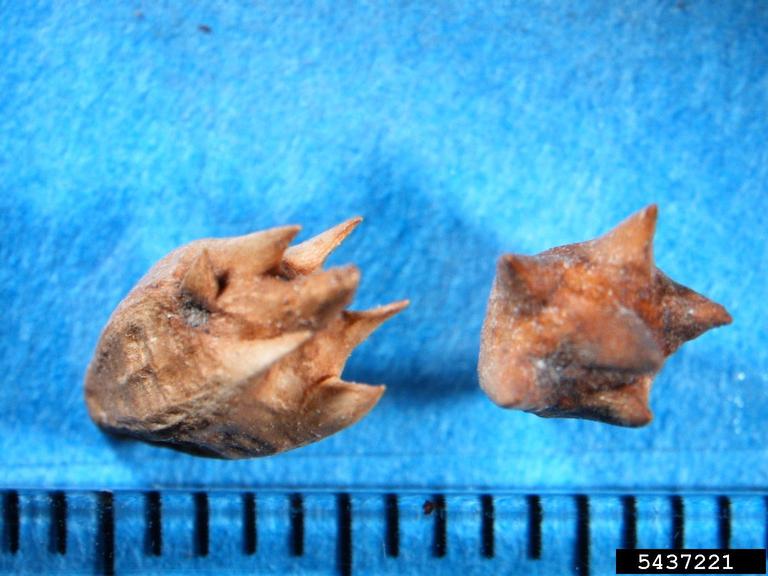 Figure 18. Giant ragweed seed have five spikes encircling a long point, resembling a crown. Photo courtesy of Bruce Ackley, The Ohio State University, Bugwood.org.
Figure 18. Giant ragweed seed have five spikes encircling a long point, resembling a crown. Photo courtesy of Bruce Ackley, The Ohio State University, Bugwood.org.
Identification: Giant ragweed can be problematic for row crop production. Plants can exceed 15 feet tall and can cause a significant reduction to yield (Figure 14). The seedlings can be identified by their very large cotyledons (Figure 15). Giant ragweed has simple, large leaves with three to five deep lobes in an opposite arrangement (Figure 16). Giant ragweed typically emerges early in the growing season, although some populations have adapted extended emergence dates into early summer. Emergence patterns can vary among fields and region based on prior management practices. Giant ragweed is often 1 to 5 feet taller than the crop and plants can bloom from July through October. Giant ragweed flowers are generally inconspicuous, found on terminal branches (Figure 17). They produce prolific amounts of pollen. Giant ragweed produces large, crown-shaped seeds with points and ridges along the top of the seeds (Figure 18).
Management: Farmers should evaluate the performance of previous herbicide applications, scout, and understand emergence patterns to determine the best management practices. Giant ragweed has a competitive advantage over other weeds and crops due to its early-season emergence, rapid growth rate, large leaf area, and prolonged emergence period. The prolonged emergence period may allow some giant ragweed biotypes to outlast preemergence soil-applied herbicides. Management practices that promote a uniform canopy can help suppress the growth of ragweed and other species with extended germination periods. Tillage can control emerged giant ragweed seedlings but may also stimulate germination. Long-term no-till practices along with proper herbicide management can help reduce giant ragweed populations.
In Ontario, giant ragweed populations have been confirmed with resistance to Group 2 (ALS inhibitors) and Group 9 (glyphosate) herbicides with some populations exhibiting resistance to both sites of action.1 To manage giant ragweed, start by controlling all emerged weeds prior to planting either with thorough tillage or an effective burndown. The use of a residual herbicide either in combination with a burndown or at planting in a tilled seedbed can help provide suppression of later-emerging giant ragweed. With dense populations of giant ragweed, multiple postemergence applications will likely be needed, especially in populations that exhibit extended germination. Postemergence options may be limited in ALS- and glyphosate-resistant populations. Herbicide application timing is critical for effective control. Multiple effective herbicide sites of action should be used to aid against further resistance.
Sources:
1 Heap, I. 2021. The International Survey of Herbicide Resistant Weeds. www.weedscience.org/.
Johnson, B., Loux, M., Nordby, D., Sprague, C., Nice, G., Westhoven, A., and Stachler, J. 2007. Biology and management of giant ragweed. GWC – 12. Glyphosate, Weeds, and Crops Series. Purdue University Extension. http://extension.purdue.edu/.
Web sources verified 2/25/21.
Common name: Lambsquarters
Scientific name: Chenopodium album
Life Cycle: Summer annual
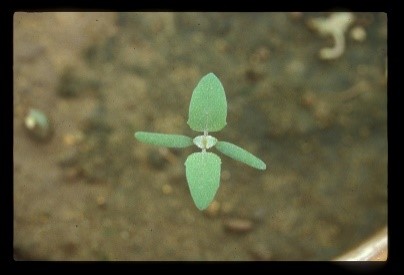 Figure 19. Lambsquarters seedling. Photo courtesy of Steven Gower.
Figure 19. Lambsquarters seedling. Photo courtesy of Steven Gower.
 Figure 21. Lambsquarters seed head. Photo courtesy of Steven Gower.
Figure 21. Lambsquarters seed head. Photo courtesy of Steven Gower.
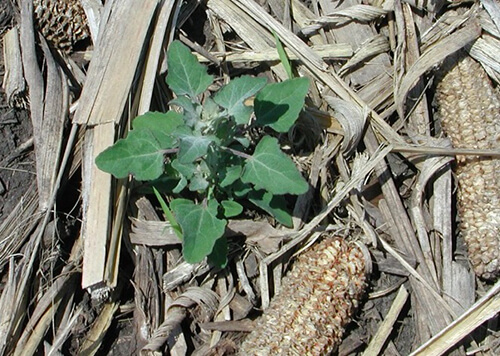 Figure 20. Lambsquarters plant. Photo courtesy of Steven Gower.
Figure 20. Lambsquarters plant. Photo courtesy of Steven Gower.
Identification: Common lambsquarters is an annual weed belonging to the goosefoot family. Like many small-seeded annuals, common lambsquarters germinates at or near the soil surface with the optimum seed depth for emergence being about 1/10 of an inch. Initially, leaves appear opposite in arrangement, later becoming alternate, and may be purplish on the underside with both surfaces covered with white granules or a mealy substance (Figure 19). More mature plants have broad, triangle-shaped leaves with irregular, shallow-toothed margins (Figure 20). The stems are vertically grooved with green or reddish stripes, and hairless. Mature plants generally reach a height of 2 to 6 feet. An average common lambsquarters plant can produce more than 70,000 seeds (Figure 21). Common lambsquarters seed is one of the most persistent in the soil seedbank. On average, it takes 12 years to reduce common lambsquarters seed in the soil seedbank by 50% and 78 years to deplete the seedbank by 99%.1
Management: In Ontario and Quebec, common lambsquarters has evolved resistance to two different herbicide sites of action, Group 5 (triazines) and Group 2 (ALS inhibitors).2 The most effective herbicide programs to control common lambsquarters combine preemergence and postemergence herbicide treatments and two or more herbicide sites of action, especially in soybean. The most effective common lambsquarters management programs include:
- Control of emerged weeds prior to planting with tillage or a preplant burndown herbicide application.
- Applying preemergence herbicides with activity on common lambsquarters.
- Applying postemergence herbicides before common lambsquarters exceed the recommended plant height for control, usually 4 to 6 inches.
- Controlling escapes or plants that emerge after the initial postemergence application with a second postemergence application. Common lambsquarters is similar to common ragweed in that it is much easier to control in corn and small grain crops than in soybean.1
Sources:
1 Curran, W. 2017. Management of triazine-resistant pigweed and lambsquarters: an integrated approach. Agronomy Facts 10. Penn State Extension. http://extension.psu.edu.
2 Heap, I. 2021. The International Survey of Herbicide Resistant Weeds. www.weedscience.org.
Web sources verified 2/25/21.
Common name: Redroot pigweed
Scientific name: Amaranthus retroflexus
Life Cycle: Summer annual
 Figure 22. Redroot pigweed seedling. Photo courtesy of Steven Gower.
Figure 22. Redroot pigweed seedling. Photo courtesy of Steven Gower.
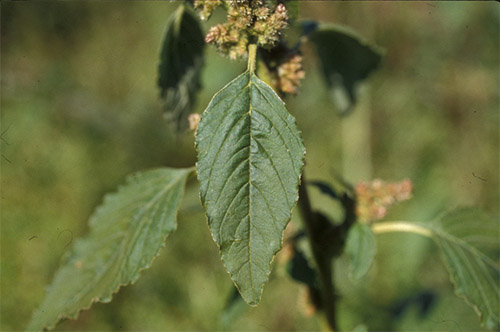 Figure 23. Redroot pigweed leaves. Photo courtesy of Steven Gower.
Figure 23. Redroot pigweed leaves. Photo courtesy of Steven Gower.
 Figure 24. Redroot pigweed stem. Photo courtesy of Steven Gower.
Figure 24. Redroot pigweed stem. Photo courtesy of Steven Gower.
 Figure 25. Redroot pigweed seed head. Photo courtesy of Steven Gower.
Figure 25. Redroot pigweed seed head. Photo courtesy of Steven Gower.
Identification: Redroot pigweed is a summer annual that is an abundant seed producer and can be found throughout Ontario and Quebec. It is important to note that there is often physical variation within pigweed species and that crossing can occur between species, resulting in hybrid plants. Redroot pigweed can be difficult to distinguish from other pigweeds, but identification is important for management. Cotyledons are linear with a prominent midvein and reddish-tinted undersides (Figure 22). Leaves are alternate and egg-shaped with a small notch in the tip (Figure 23). Leaf surfaces are rough with hairs on the underside, most notably, the veins. As seedlings mature, the stem becomes rough and very hairy (Figure 24). Stems grow up to 6 feet in height, are pale green to reddish, and usually red at the base. Small, greenish flowers grow in dense terminal and auxiliary clusters (Figure 25). Clusters are thick, prickly spikes up to 8 inches long. Flowers have bracts about twice as long as the sepals and yield small, round, shiny, black seeds. A single, large, mature plant of redroot pigweed can produce well over 200,000 seeds.
Similar Species: Redroot pigweed can be confused with smooth pigweed (Amaranthus hybridus), which differs by having hairless leaves, slightly hairy upper stems, and narrower, less dense, less prickly seed heads (Figures 26 and 27). Smooth pigweed flowering stems are the shortest of the pigweeds. Green pigweed is another similar species and is managed in the same way as redroot pigweed.
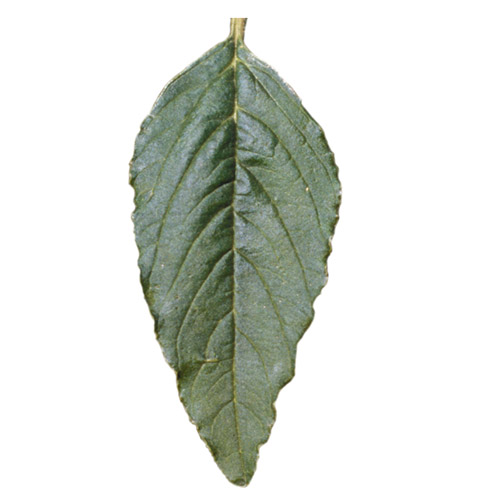 Figure 26. Smooth pigweed leaf. Photo courtesy of Steven Gower.
Figure 26. Smooth pigweed leaf. Photo courtesy of Steven Gower.
 Figure 27. Smooth pigweed seedhead. Photo courtesy of Steven Gower.
Figure 27. Smooth pigweed seedhead. Photo courtesy of Steven Gower.
Management
: The genetic variability and potential to hybridize with other weedy amaranths species contributes to the capacity for pigweed to adapt to different environments, climates, production systems, and control tactics. Herbicide-resistant populations of pigweeds are present in Ontario and Quebec with widespread resistance to Group 2 (ALS inhibitors) and Group 5 (triazines) herbicides. In Ontario, smooth and redroot pigweed populations have been found with resistance to Group 6 (nitriles) herbicides. Multiple resistance to Group 2 and Group 5 herbicides have also been found in green pigweed in Ontario.
1 Therefore, producers dealing with pigweeds should diversify the herbicide sites of action in tank mixes and between seasons. Avoiding the use of the same herbicide site of action two years in a row can help decrease the chance of populations developing resistance.
Sources:
1 Heap, I. 2021. The International Survey of Herbicide Resistant Weeds. www.weedscience.org.
Curran, W. 2017. Management of triazine-resistant pigweed and lambsquarters: an integrated approach. Agronomy Facts 10. Penn State Extension. http://extension.psu.edu.
Pratt, D., Owen, M.D.K., Clark, L.G., and Gardner, A. 1999. Identification of the weedy pigweeds and waterhemps of Iowa. Pm-1786. Iowa State Extension. https://store.extension.iastate.edu.
Web sources verified 2/25/21.
Common name: Velvetleaf
Scientific name: Abutilon theophrasti
Life Cycle: Summer annual
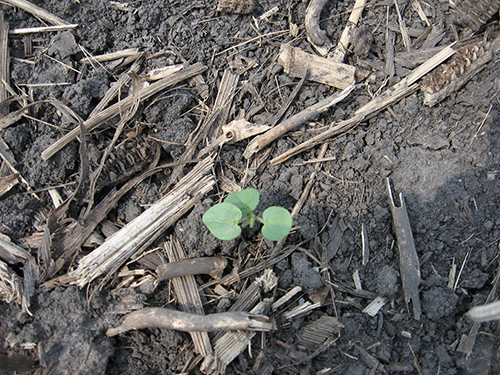 Figure 28. Velvetleaf seedling.
Figure 28. Velvetleaf seedling.
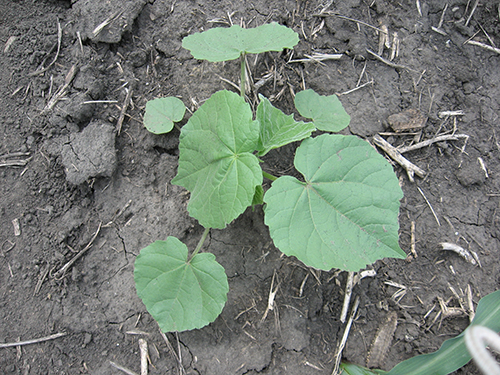 Figure 29. Velvetleaf plant.
Figure 29. Velvetleaf plant.
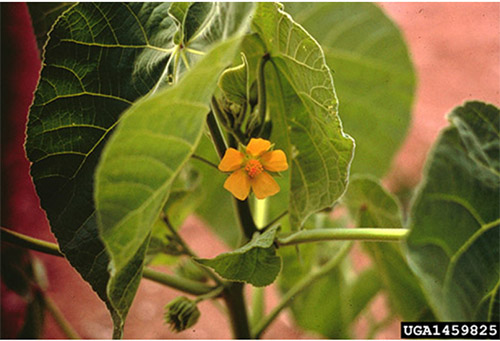 Figure 30. Velvetleaf flower. Photo courtesy of Steve Dewey, Utah State University, Bugwood.org.
Figure 30. Velvetleaf flower. Photo courtesy of Steve Dewey, Utah State University, Bugwood.org.
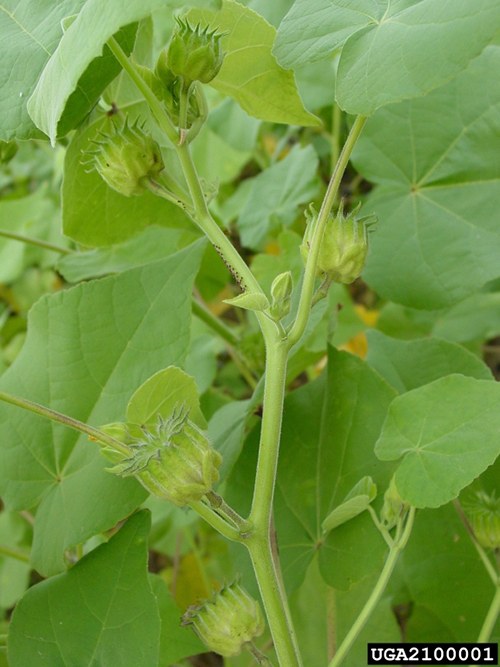 Figure 31. Bowl-shaped velvetleaf fruit. Photo courtesy of Charles T. Bryson, USDA Agricultural Research Service, Bugwood.org.
Figure 31. Bowl-shaped velvetleaf fruit. Photo courtesy of Charles T. Bryson, USDA Agricultural Research Service, Bugwood.org.
 Figure 32. Velvetleaf seeds. Photo courtesy of Bruce Ackley, The Ohio State University, Bugwood.org.
Figure 32. Velvetleaf seeds. Photo courtesy of Bruce Ackley, The Ohio State University, Bugwood.org.
Identification: Velvetleaf is a serious weed in Quebec and Ontario. Velvetleaf is an erect summer annual easily identifiable by heart-shaped leaves with an abundance of short, soft hairs giving it a velvety feel. It is highly competitive in row crops and has allelopathic properties. Seedlings have one heart-shaped cotyledon and one nearly-round cotyledon with short hairs on both surfaces (Figure 28). Velvetleaf seedlings can be confused with prickly sida (Sida spinosa) which begins to emerge at the same time and has two heart-shaped cotyledons and a first true leaf that is more serrated than velvetleaf. Subsequent leaves of velvetleaf plants are heart-shaped with round, toothed margins, grow 3 to 8 inches long and wide and have pointed tips arranged alternately on the stem (Figure 29). Stems are mostly unbranched and can reach up to 7 feet tall and are also covered in soft hairs. Both leaves and stems emit an unpleasant odor when crushed.
Velvetleaf flowers consist of five orange-yellow petals that form on short stalks in upper leaf axils (Figure 30). Fruit are bowl-shaped, green capsules that turn dark brown at maturity (Figure 31). Seeds are kidney-shaped, covered in hair, and grayish brown (Figure 32). One velvetleaf plant can produce up to 9,000 seeds and the hard seed coats and ability to emerge from soil depths up to 2 inches contribute to its persistence and longevity in the soil seedbank.
Management: Existing stands of velvetleaf should be managed prior to planting. Preemergence herbicides are effective at controlling velvetleaf and allow the crop to gain a competitive advantage. Cultivation can also help prevent emergence. Effective soil-applied residual herbicides can be included with burndown herbicide applications. Postemergence herbicide applications following a soil-applied treatment are generally most effective for velvetleaf management. Velvetleaf size can impact the effectiveness of postemergence applications. In addition, velvetleaf can be difficult to control when herbicide applications are made between late evening and early morning. During this time, velvetleaf leaves droop to a nearly vertical position making it difficult to get adequate spray coverage. Environmental stresses can also cause leaves to angle downward.
Sources :
Bush, M.D. 2015. Weed of the month: velvetleaf. Integrated Pest Management. University of Missouri. http://ipm.missouri.edu.
Web sources verified 2/25/21.
Common name: Waterhemp
Scientific name: Amaranthus rudis
Life Cycle: Summer annual
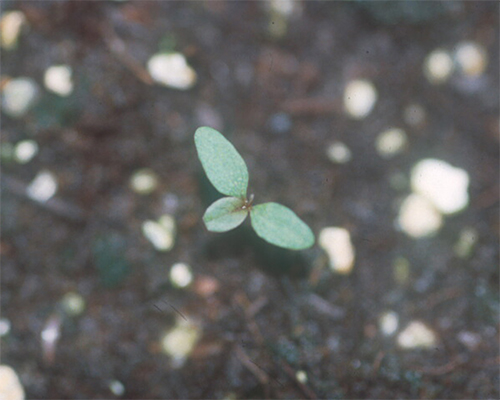 Figure 33. Waterhemp seedling. Photo courtesy of Steven Gower.
Figure 33. Waterhemp seedling. Photo courtesy of Steven Gower.
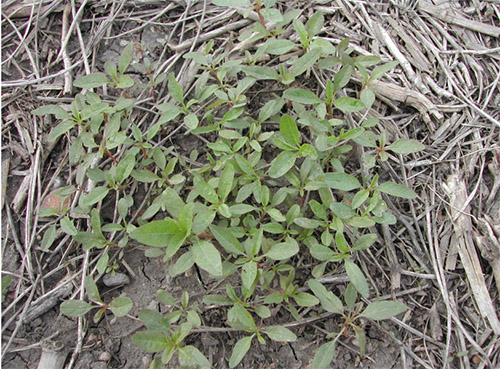 Figure 34. Young common waterhemp plants.
Figure 34. Young common waterhemp plants.
 Figure 35. Common waterhemp with red stems and green leaves. Note lanceolate leaf shape and petiole shorter than length of leaf. Photo courtesy of Steven Gower.
Figure 35. Common waterhemp with red stems and green leaves. Note lanceolate leaf shape and petiole shorter than length of leaf. Photo courtesy of Steven Gower.
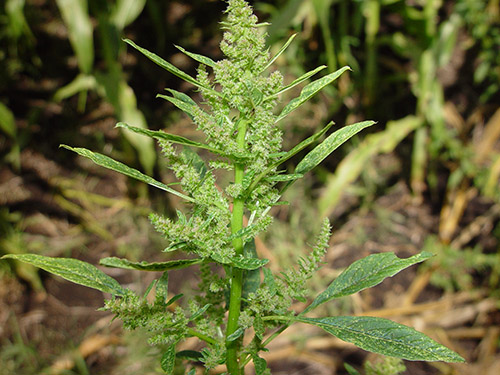 Figure 36. Common waterhemp inflorescence. Photo courtesy of Steven Gower.
Figure 36. Common waterhemp inflorescence. Photo courtesy of Steven Gower.
Identification: Waterhemp is a member of the pigweed (or Amaranth) family, which includes several weedy species including redroot pigweed, and smooth pigweed. Distinguishing the different pigweed species from one another is challenging, especially in the seedling stages. There are a few key differences. Waterhemp seedlings are hairless with leaves that look waxy or glossy. Waterhemp cotyledons are often more egg-shaped than the long, linear cotyledons of other pigweed species (Figure 33). Waterhemp’s first true leaves are generally longer and more lance-shaped than other pigweeds (Figures 34 and 35). Waterhemp has hairless stems while other pigweeds have hairy stems.1 Waterhemp is typically 4 to 5 feet tall but can grow upwards of 10 feet. Many small green flowers form an inflorescence (Figure 36). While the terminal inflorescence can be up to 1 foot long, many wiry lateral branches occur throughout the inflorescence. Male and female flowers are found on separate plants, and some populations may turn pinkish red as they mature (most are green). Palmer amaranth is another similar species to waterhemp. Palmer Amaranth and waterhemp share the hairless stem feature that other pigweeds do not have. The key to differentiating Palmer Amaranth from other pigweeds is the petiole. Palmer Amaranth has a long petiole relative to the length of the leaf, while the leaf petiole on waterhemp (and other pigweeds) is shorter than the length of the leaf blade.
Waterhemp plants emerge continuously and late into the season. They are prolific seed producers and can produce 300,000 or more seeds per plant.2 Seeds are small but can survive in the soil for several years. The extended emergence pattern and prolific seed production may require multiple herbicide applications in cropping systems. Production practices that enhance crop competitiveness and disrupt waterhemp seed production are extremely valuable tools for waterhemp management.
Waterhemp has a relatively higher growth rate than most weeds or crops at an upwards of 1 inch per day during the season.3 Competition from waterhemp resulted in a 44% reduction in yield in soybean in 30-inch row spacing and a 37% reduction in yield in 7.5-inch row spacing.4 Corn yield was reduced by 15%. However, delaying weed emergence in soybean beyond V5 resulted in only a 10% yield reduction and a 1% reduction in corn when waterhemp was controlled prior to 6 inches in height.4
Watchouts: Herbicide-resistant populations of waterhemp are prevalent in many counties in Ontario and Quebec with some populations resistant to 4 herbicide sites of action. In Ontario, populations have been found with resistance to Group 2 (ALS inhibitors), Group 5 (triazines), Group 9 (glyphosate), and Group 14 (PPO inhibitors).5 Resistance to a Group 27 (HPPD inhibitors) herbicide was identified in Quebec in 2020 with resistance to Group 2, Group 5 and Group 9 also found in the same patch.6 This level and prevalence of herbicide-resistant waterhemp makes it necessary to integrate multiple management practices to achieve optimal control.
Management: A preemergence herbicide application helps reduce early-season weed competition and adds additional sites of action to a weed management program. There are several herbicides with alternative sites of action for use in soybean and corn. Sequential applications of herbicides with different sites of action and tank mixtures are the best options for waterhemp management. To maximize the effectiveness of soil-applied preemergence herbicides, select the preemergence herbicides based on the weed spectrum in each field and use full labeled rates. Scout each field regularly to determine in-crop application timing and to identify waterhemp that may have escaped the previous application or emerged late.
Continuous emergence of waterhemp normally requires the use of postemergence herbicide applications even following preemergence herbicide applications. Waterhemp should be sprayed when actively growing and at or before 4 inches in height. Thorough spray coverage is essential, particularly when tank-mixing other herbicides with glyphosate.
In many cases, Group 5 resistance is specifically resistance to atrazine, though there are populations with resistance to metribuzin as well. Scouting following herbicide application is also important. With post-emergence applications of Group 14 herbicides, resistant plants appear severely injured up to 14 days but then begin to regrow from the axillary buds (Figure 37).7
 Figure 37. Waterhemp regrowth following application of PPO herbicide. Photo courtesy of L. Benoit, University of Guelph.
Figure 37. Waterhemp regrowth following application of PPO herbicide. Photo courtesy of L. Benoit, University of Guelph.
Sources:
1 Costea, M., Weaver, S.E., and Tardif, F.J. 2005. The biology of invasive alien plants in Canada. 3. Amaranthus tuberculatus (Moq.) Sauer var. rudis (Sauer). Can. J. Plant Sci. 85:507-522.
2 Sellers, B.A., Smeda, R.J., Johnson, W.G., Kendig, J.A., and Ellersieck, M.R. 2003. Comparative growth of six Amaranthus species in Missouri. Weed Sci. 51:329-333.
3 Seibert, A.C. and Pearce, R.B. 1993. Growth analysis of weed and crop species with reference to seed weight. Weed Sci. 41:52-56.
4 Nordby, D., Hartzler, B., and Bradley, K. 2007. Biology and management of waterhemp. GWC-13.
5 Ontario Ministry of Agriculture, Food and Rural Affairs. Waterhemp biology and control in Field Crop News. .
6 Le Reseau D’avertissements Phytosanitaires. 2020. Presence d’amarante tuberculee resistante aux herbicides du groupe 27. N0 8, decembre 2020.
7 Benoit, L., Hedges, B., Schryver, M.G., Soltani, N., Hooker, D.C., Robinson, D.,E., Laforest, M., Soufiane, B., et.al. 2019. The first record of protoporphyringogen oxidase and four-way herbicide resistance in eastern Canada. Can. J. Plant Sci. https://cdnsciencepub.com/doi/pdf/10.1139/CJPS-2018-0326
Hartzler, B. and Battles, B. 1998. Late-emerging waterhemp - how big of a problem? Iowa State Weed Science online.
Hartzler, R. 2000. Early season weed competition. Iowa State University Integrated Crop Management.
Web sources verified 2/25/21.
Legal Statements
ALWAYS READ AND FOLLOW PESTICIDE LABEL DIRECTIONS. Performance may vary, from location to location and from year to year, as local growing, soil and weather conditions may vary. Growers should evaluate data from multiple locations and years whenever possible and should consider the impacts of these conditions on the grower’s fields.
Tank mixtures: The applicable labeling for each product must be in the possession of the user at the time of application. Follow applicable use instructions, including application rates, precautions and restrictions of each product used in the tank mixture. Bayer has not tested all tank mix product formulations for compatibility or performance other than specifically listed by brand name. Always predetermine the compatibility of tank mixtures by mixing small proportional quantities in advance.
©2021 Bayer Group. All rights reserved. 1027_S1_CA